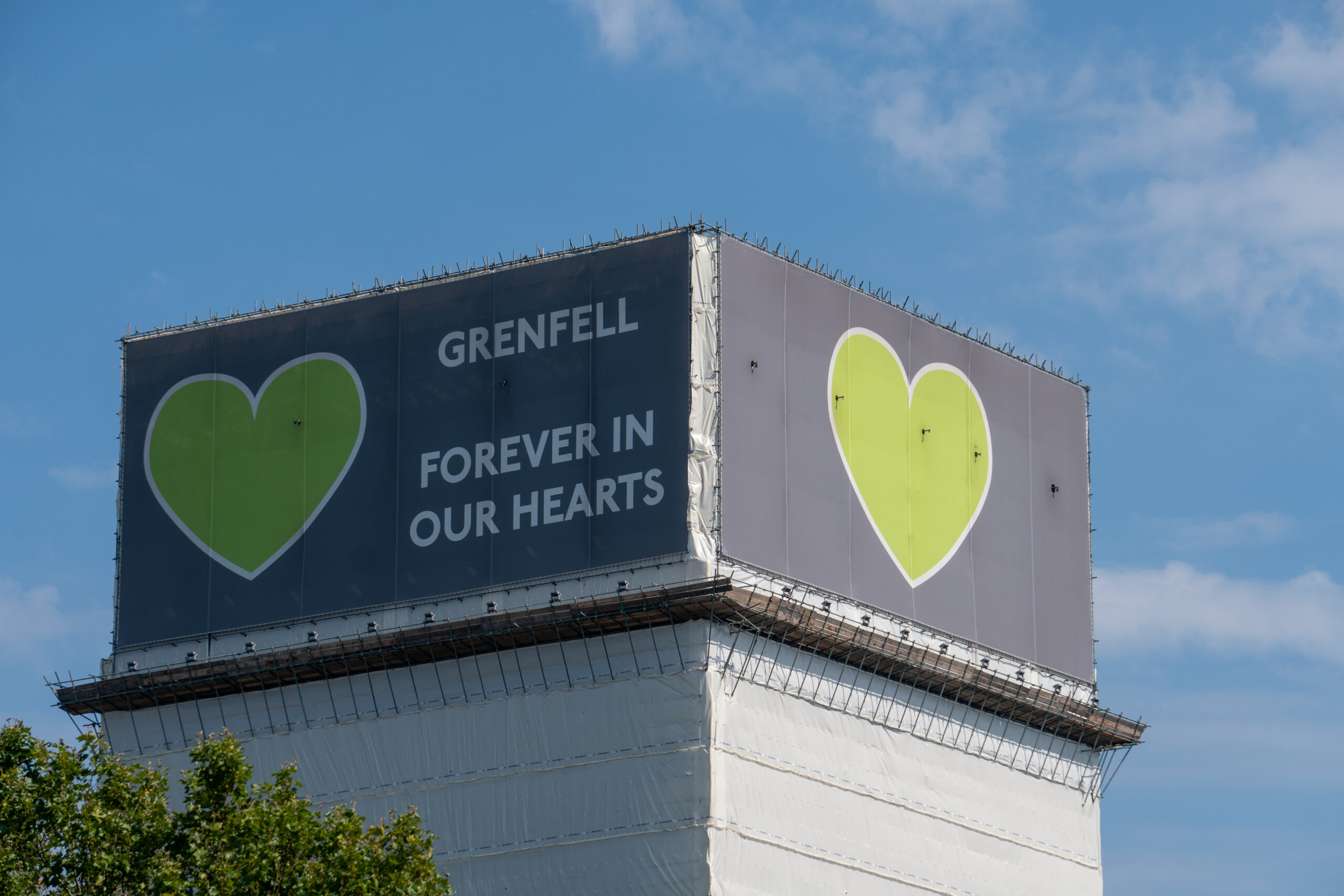A twist in the tale!: - the Court of Appeal throws up some surprises in the “At the Premises” judgment
The long-awaited judgment in the “At the Premises” (“ATP”) judgment has now been handed down, and the expected policyholder-friendly outcome marks another welcome milestone in the journey towards bringing these cases to a conclusion, even if the route by which the Court of Appeal got there took some less expected twists and turns.
While there were a number of other issues on appeal, this article focuses on causation, which continues to be a key battleground for insurers and their policyholders.
Background
By way of a brief recap, policies with clauses providing cover for cases of Covid-19 “at the premises” were not considered by the Divisional and Supreme Court in the FCA Test Case, which instead considered a range of policies including those which provided cover for a disease occurring within a specified radius of an insured premises.
In the FCA Test Case, the Supreme Court considered causation at some length, finding that “[212]…in order to show that loss from interruption of the insured business was proximately caused by one or more occurrences of illness resulting from COVID-19, it is sufficient to prove that the interruption was a result of Government action taken in response to cases of disease which included at least one case of COVID-19 within the geographical area covered by the clause.”
However, insurers resisted the application of that analysis to ATP policy wordings, leading to this litigation considering “the critical question” as to whether the Supreme Court’s reasoning in respect of causation could properly be applied to such wordings. At first instance, the answer was a decisive yes (and some further background can be found in our previous article). Insurers appealed, and this judgment is from that appeal which was heard earlier this year.
Insurers’ Causation Arguments
Despite a number of common causation issues to all of the appeals, the primary case advanced differed between the insurers, as follows:
- ExCeL & Kaizen Insurers – their position was that there would be cover only when an occurrence of disease at the premises was a “distinct effective cause” of the closure of the premises (i.e. it must be a known occurrence of the disease at the premises to which the government or local authority was responding);
- Hairlab & Why Not Insurers – they took the position that only a stricter “but for” test applied (requiring the occurrence of a disease at the premises to be a necessary and sufficient cause of the subsequent restrictions - the court recognised this test would seldom be satisfied); and
- Mayfair Insurers – whose position was that the authority had to know about the suffering of disease at the particular premises and had to take it into account in reaching its decision (although it need only contribute to that decision).
The Court of Appeal’s Decision
In setting out their positions, the insurers argued that the correct approach was to begin with the interpretation of the policies in issue, having regard to their language and context, rather than asking whether those clauses differ materially from the radius clauses considered by the Supreme Court in the FCA Test Case. The Court of Appeal agreed there was some force in that.
However, ultimately that change of approach proved to make very little difference to the outcome, with the Court of Appeal finding that:
- The nature of the insured peril informs the causation test agreed between the parties, which is not derived from other perils mentioned in the insuring clause (such as vermin infestation), but instead focuses on the particular peril in question.
- In that regard, notifiable diseases spread rapidly and widely, with the potential to cause interruption over a wide area. The circumstances that would lead to a closure of an insured premises are unlikely to be in response to an isolated incident: instead, it must have been contemplated that a closure or restrictions imposed by a relevant authority would be in response to an outbreak as a whole over a particular area, whether that be local or national. Furthermore, the worse and more widespread the outbreak of the disease, the more likely it would be that such restrictions would be imposed.
- Accordingly, a “but for” test could not have been the intended approach to causation, as the parties must have intended for the causation requirement to be satisfied if the occurrence at the premises was one of a number of causes of the closure.
- It would be unrealistic to suppose that the authority would apply its mind to identifying a particular case of a disease at a particular premises. In the case of a serious outbreak, a relevant authority would know that there had been a number of occurrences of a disease (perhaps over a certain area, or affecting a particular kind of premises within an area) and it would simply react to those occurrences by imposing restrictions accordingly.
- The finding of fact by both the Divisional and Supreme Court in the FCA Test Case (that “each of the individual cases of illness resulting from Covid-19 which had occurred by the date of any Government action was a separate and equally effective cause of that action”), applies equally to the ATP claims, both in respect of the cases which were known about, and those which were “known unknowns”.
Comment
This appeal judgment is a welcome development for policyholders and confirms that despite the differences between radius and ATP clauses, it may not materially affect the nature of the casual link that must be established, which is a matter of policy interpretation and intention.
Policyholders with the benefit of ATP cover can now expect a recovery from their insurers, although notably a lack of clarity remains about the evidence required to demonstrate the presence of a case of Covid-19 at the premises, and it is to be hoped that insurers take a pragmatic approach that avoids this issue becoming the next battleground.
Now that the ATP appeal has concluded, and with the tide very much in favour of the policyholders, the Court of Appeal will be considering similar causation arguments along with furlough in the upcoming appeals arising out of the Gatwick Investment Ltd & Ors v Liberty Mutual Insurance Europe SE group of cases.
Watch this space.
Anthony McGeough is a Senior Associate at Fenchurch Law
Grenfell Tower Inquiry: Phase 2 Report
Last week saw the publication of the second and final Grenfell Tower Inquiry report (“Report”) examining the circumstances that led to the tragedy which claimed 72 lives more than seven years ago.
The damning Report concluded that the “culmination of decades of failure by central government” and the “systematic dishonesty” of product manufacturers contributed to a rotten culture at the heart of the industry, setting the path to disaster.
Below is a summary of the key findings in the Report.
Summary of Report Findings
The Report named and shamed a number of parties, including, amongst others:
- The government. From the fires that involved extensive spread through combustible external panels at Knowsley Heights in 1991, Garnock Court in 1999 and Lakanal House in 2009 respectively; to the knowledge of BRE’s large-scale test results showing ACM panels burnt violently in 2001; and awareness of the industry’s worries that combustible insulation and ACM panels were routinely used on high-rise buildings in breach of building regulations – time and time again, the government failed to act in relation to the risks posed by use of these combustible materials in buildings. The government’s deregulatory agenda also contributed to the disregard and delays in strengthening the fire safety regime.
- The Building Research Establishment. The BRE, recognised as a leader in fire safety nationally and internationally, was regularly engaged by the government to carry out research and provide reports. The Inquiry uncovered issues with the BRE such as poor record-keeping, and a lack of scientific rigour, which exposed it to manipulation of test results by product manufacturers. Further, the BRE seemed to have been reluctant to draw the government’s attention to the dangers presented in the cladding products it tested, and the reports presenting these risks to life were drafted in less than overt terms.
- Arconic Architectural Products, Celotex and Kingspan. These companies were manufacturers of the combustible ACM cladding and insulation materials used in the refurbishment of Grenfell Tower. Despite being fully aware the products they sold came with grave concerns for fire safety and were unsuitable for using on high-rise buildings, they all “engaged in deliberate and sustained strategies to manipulate the testing processes, misrepresent test data and mislead the market” so as to further their own commercial interests at the expense of others.
- Rydon, Harley Façade and Studio E. The principal contractor, cladding subcontractor and architect engaged in the refurbishment project were all criticised for failing to understand and discharge their obligations under the contracts. None of them were found to have acted in accordance with the standards of a reasonably competent person in their respective positions. In particular, as the architect of the refurbishment project, Studio E was responsible for the design of the external wall and its choice of materials, and therefore bears a “very significant degree of responsibility”.
The Report also addresses two matters outstanding from the Inquiry Phase 1:
- On the contribution to the fire by ACM panels and the insulation boards, it confirms that the principal factor in the rapid growth of fire was the unmodified polyethylene in the ACM panels, though the insulation (due to its heat retaining ability) was also key.
- As to how the fire escaped into the external wall of the building from the kitchen of the flat where the fire first started, it confirmed the findings in Phase 1, i.e. due to the proximity of combustible cladding to the fire, where the fire likely escaped via the route of a collapsed uPVC window jamb into the column cavity in the external wall.
The Report contains various recommendations targeting the deficiencies identified, with the aim of preventing another cladding fire disaster. To enhance accountability and ensure the government will seriously consider the recommendations affecting fire safety going forward, the Inquiry recommends that the government be legally required to maintain a publicly accessible record of recommendations made by select committees and public inquiries, and document the steps taken in response.
Key Takeaways
The Grenfell Tower fire is a disaster that could have been avoided.
At present, there remain some 2,000 residential buildings in the UK at 11 metres or over identified has having unsafe cladding, in respect of which remedial works have yet to commence. The recent fire that engulfed a block of flats in Dagenham with “non-compliant” cladding highlights the urgency for remediation: there can be no excuses for history repeating itself.
Developers, landlords and construction professionals with cladding exposures should proactively step up to collaborate on completion of investigations and remedial works, to make homes safe. The Report provides some guidance on the apportionment of liability among the various industry stakeholders, which could potentially be helpful for parties pursuing recoveries / seeking contributions, for projects with unresolved cladding and fire safety claims.
Queenie Wong is an Associate at Fenchurch Law



